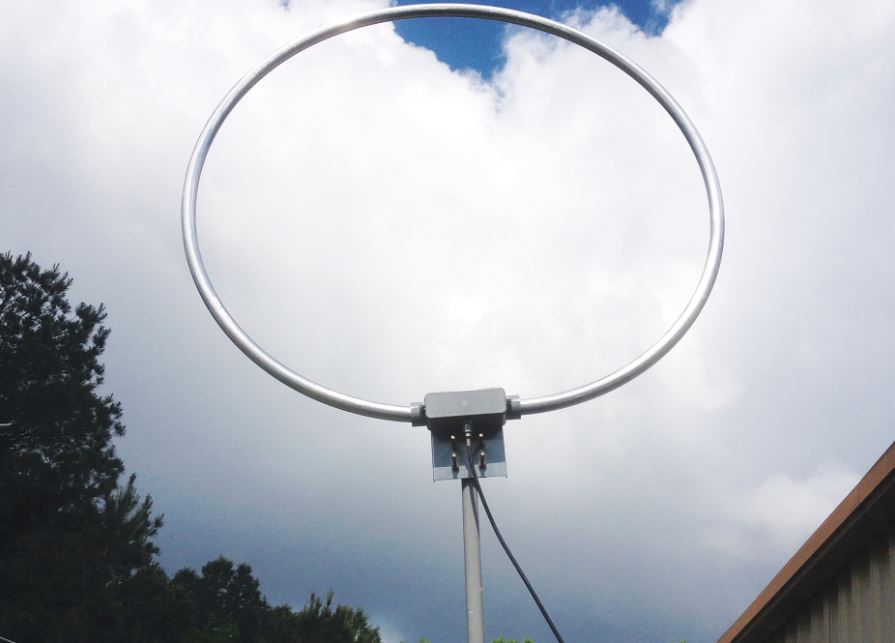Many thanks to SWLing Post contributor, Frank M. Howell, who left the following comment on our indoor antenna post yesterday:
You omitted the MFJ Receive Loop….it outperforms my Wellbrook ALS-1530+. Very competitive price point!
See http://www.mfjenterprises.com/Product.php?productid=MFJ-1886.
Thanks for pointing this out, Frank. You’re right in that I had forgotten about the MFJ receive only loop antenna. It’s a fairly new product in their (massive!) catalog of radio products.
I’m very curious if any other SWLing Post readers have experience with the MFJ-1886 antenna. I’d love a review.


I am very disappointed with the m f j receive only loop , I have it 2 metres off ground. It picks up a lot of noice on medium wave to the point of not hearing week stations.it is bad on most bands below 9mhz. There does not seem to have much gain , 2 metre piece of wire seems better on below 9 mhz. Trying to null noise is not helpful,as it makes no difference, I will stick to my vertical hf aerial , which seems to vastly outperform the mfj loop.
Hi, Andrew,
It almost sounds like your MFJ-1886 loop antenna has a fault. My experience with the MFJ-1886 is that its performance is very similar to a Wellbrook and the Pixel Loop Pro (now with DX Engineering).
Cheers,
Thomas
I am glad that you are enjoying your MFJ loop. I recently picked up a W6LVP Magnetic Loop a few weeks ago and put it up about 20 ft on a Channel Master rotator and use it as my receive antenna on my ham station while using a 132 ft Carolina Windom antenna for transmit. I really have found a tremendous difference in noise after going to a loop. I also have a Timewave ANC-4 Noise reducing device that works great in combination with either antenna when fighting noise that is not nulled out by the loop because I am using the loop at times to pick between stations in different locations on the ham bands and also BCB stations. I have a 12 ft noise dipole at 3 ft above the ground for the ANC-4 that I placed right under my electrical power line pole. The combination of a loop and the ANC-4 has allowed me to enjoy listening to Shortwave like back in the 50s and 60s before all of the electrical environment issues we face today.
73s
WD9GNG
While on the subject of loops, those seeking an inexpensive but effective loop for AM BCB reception, Grundig’s AN-200 works quite well. It can be placed near a receiver (one with a ferrite loopstick) or directly connected to the antenna terminals of a receiver. Have been using an AN-200 with a vintage Sierra 303B and am very pleased with the results.
As for MFJ Enterprises, I’ve been buying their products from way back in the 70’s and was never dissatisfied with any purchases. I remember their first product, a random wire tuner, and over the past few decades they’ve expanded their line of ham and SWL products exponentially. A great success story if there ever was one.
Tom,
See my eHam review on build quality versus Wellbrook. Andy makes a fund loop but there are mechanical weaknesses.
On your slur, the nickname I prefer is Mississippi’s Finest Juel. You should buy one from Andy.
73,
Frank
How’s the build quality on this loop? I’ve heard some stories of their products falling apart in short order, which is why they’re so che…I mean, affordable. The fact the company has earned the nickname “Mississippi’s Finest Junk” doesn’t give me much hope for this being a wise investment, long term, but from the lone picture on their website it seems to be of reasonable quality.
In the interim before a fuller review by a reader, here’s my brief one posted in eHam:
http://www.eham.net/reviews/detail/13724
With 3,000 products, it’s easy to miss something from Martin’s catalog!
73,
Frank
Hello Frank, what is the best way to tell if the bias-t is actually working. When using the on off switch I am seeing no differences in signals whatsoever. Any input would be greatly appreciated. Thanks and 73’s
You can test the bias T with a voltmeter. Connect AC, switch the unit on, and look for DV voltage between the center pin and outer ring of the output (antenna side). It should be nominally 12 volts. There should be no voltage on the bias T’s input coaxial connector (receiver side). If a DC voltage is measured at the bias T output, connect the antenna feedline and check at the antenna end of the feedline for DC voltage to be very close or slightly below that measured at the bias T output. If the feedline is suppling voltage to the antenna input, there is an issue in the amplifier.
Sorry Bill, forgot to thank you for this response, better late than never I guess, 73’s.